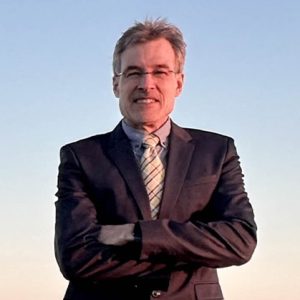Fractional CO2 Laser Resurfacing
December 21, 2010


*Individual Results May Vary
At the Langdon Center we have been getting great results for our patients using the Fraxel laser for rejuvenation of facial and non-facial skin. Dr. Langdon was one of the first physicians in the country to acquire the Fraxel laser (in September 2005). As we discussed in a previous newsletter article, the Fraxel laser affects a fraction (usually about 20%) of the actual surface area of treated skin. Microscopic three-dimensional columns of skin (about 1 million of them over the entire face) are coagulated at each spot where the Fraxel laser penetrates the skin. The intervening untreated skin (amounting to about 80% of the total surface area) is not affected. New skin tissue is regenerated to replace each tiny column of treated skin during the recovery process. Sun-damaged or scarred skin is thus replaced with brand-new skin. Treatments with the Fraxel laser have the shortest recovery time of any highly effective skin renewal treatment. As Dr. Langdon explains in his book Understanding Cosmetic Laser Surgery one of the most important characteristics of any laser is the wavelength of visible or infrared light that the laser produces. Because of its wavelength the Fraxel laser does not cause very much contraction (tightening) of treated skin. The carbon dioxide (CO2) laser has been used since the mid-1990s for facial laser resurfacing; one of its advantages is the significant contraction of facial skin that it causes. Patients with more severe sun damage or aging of facial skin, associated with deeper wrinkles or looseness of the skin, are good candidates for CO2 laser resurfacing. These patients can achieve the greatest possible improvement from CO2 laser resurfacing, thus the CO2 laser is considered the “gold standard” instrument for facial resurfacing. In “traditional” CO2 laser resurfacing (in which 100% of the skin’s surface area is treated) the recovery time is relatively prolonged (typically one and a half to two weeks).


A newer approach to laser resurfacing is fractional CO2 laser resurfacing. A special “scanning” handpiece is attached to the CO2 laser; the scanner “fractionates” the CO2 laser beam into tiny spots, affording a treatment similar to that with the Fraxel laser. With this technique, the greater degree of skin contraction afforded by the CO2 laser is combined with the quick recovery of fractional resurfacing. The same type of patients who benefit the most from traditional CO2 laser resurfacing can achieve skin tightening from fractional CO2 laser resurfacing, with a quick recovery (typically 3 to 4 days). Like the Fraxel laser, improvement is directly proportional to the number of treatments that the patient receives. Most patients undergo three or more treatments of fractional CO2 laser resurfacing. The patient in the photo was treated only once with fractional CO2 laser resurfacing. Note the obvious improvement in her cheek wrinkles. The greater intensity of the CO2 laser requires more anesthesia (numbing) than is needed for Fraxel laser treatment. Prior to Fraxel treatment, the skin is numbed with an anesthetic cream applied to the surface. A “Zimmer chiller” is used to blow refrigerated air onto the skin during the Fraxel treatment. In contrast, local anesthetic solution is injected prior to fractional CO2 laser resurfacing. The injected anesthetic affords complete numbing so that the Zimmer chiller is not necessary. After the treatment, patients apply a moisturizing ointment for a few days. Most patients look good within four days of the treatment. At which time they typically have some redness but little swelling. Optimal results are seen after a series of three treatments, although many patients are happy with the results of only one fractional CO2 laser resurfacing treatment. For more information, please see our web site or call our office (203) 453-8625 to schedule a consultation.
Fractional CO2 Laser Consultations Available
If you have further questions about Fractional CO2 Laser, we encourage you to schedule a consultation at The Langdon Center in Guilford, CT. Call us at 203-453-8625 or fill out our convenient online contact form.
Dr. Langdon and all of his nurses and staff are very friendly and they know how to make you feel very comfortable. He is a very experienced doctor, I call him an artistic dr. because he’s so precise in his work. If you would like something done right, dr. Langdon is the one to see. I am very pleased with my results and very grateful for him and his staff being here in Ct.
Take the Next Step
If you have further questions about Fractional CO2 Laser, we encourage you to schedule a consultation at The Langdon Center in Guilford, CT. Call us at (203) 453-8625 or fill out our convenient online contact form.








